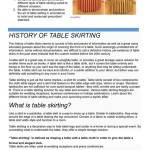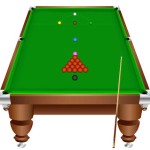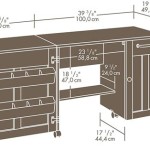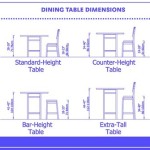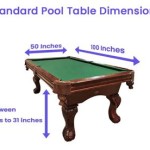The Versatile Coffee Table That Transforms Into a Dining Table
In contemporary living spaces, maximizing functionality and adaptability is paramount. Multifunctional furniture has emerged as a popular solution, offering space-saving alternatives to traditional, single-purpose pieces. Among these innovative designs, the coffee table that folds into a dining table stands out as a particularly ingenious and practical item. This convertible furniture piece seamlessly transitions between a low-profile coffee table for everyday use and a full-sized dining table for entertaining guests, providing a versatile solution for apartments, small homes, and anyone seeking to optimize their living area.
The core appeal of this type of furniture lies in its ability to address the spatial limitations often encountered in modern dwellings. Many individuals desire the convenience of a dining table for meals and social gatherings, but lack the dedicated space to accommodate a permanent, large table. A convertible coffee table offers the best of both worlds, providing a compact surface for daily activities and the capacity to expand when needed.
This article will explore the design principles, mechanisms, materials, benefits, and considerations associated with coffee tables that transform into dining tables. It will delve into the engineering aspects that enable the transformation, the material choices that contribute to durability and aesthetics, and the practical advantages this type of furniture offers in various living environments.
Understanding the Transformation Mechanism
The transformation from coffee table to dining table hinges on a sophisticated mechanism that allows the table to expand in both height and surface area. The specific design of this mechanism can vary depending on the manufacturer and the style of the table, but some common principles are employed. One prevalent design involves a gas-lift mechanism combined with articulating hinges. The gas-lift system allows for smooth and controlled height adjustment, enabling the table to rise from coffee table height (typically around 16-18 inches) to dining table height (approximately 28-30 inches). Simultaneously, the articulating hinges allow the tabletop to unfold or expand, increasing the surface area to comfortably seat multiple people.
Another common approach utilizes a scissor-lift mechanism, which employs a series of interconnected levers to achieve height adjustment. This system is often favored for its stability and load-bearing capacity. In conjunction with the lifting mechanism, the tabletop typically features either a folding or extending design. Folding tabletops often consist of two or more leaves that are hinged together and can be unfolded to create a larger surface. Extending tabletops, on the other hand, usually involve sliding sections that pull out from beneath the main tabletop, effectively increasing the usable area. Some designs incorporate a combination of both folding and extending elements to maximize versatility.
The quality and durability of the transformation mechanism are crucial factors in the overall performance and longevity of the coffee table. A well-engineered mechanism will operate smoothly and reliably, with minimal effort required to transition between configurations. Conversely, a poorly designed or constructed mechanism may be prone to sticking, instability, or even failure under load. Therefore, it is essential to carefully evaluate the quality of the mechanism before purchasing a convertible coffee table.
Furthermore, the mechanism should be designed with safety in mind. Pinch points should be minimized or guarded, and the lifting and lowering action should be controlled and predictable to prevent accidents. A robust locking mechanism is also essential to ensure that the table remains securely in both the coffee table and dining table configurations.
Materials and Construction
The materials used in the construction of a convertible coffee table significantly impact its durability, aesthetics, and overall value. The tabletop, frame, and lifting mechanism are typically made from different materials, each chosen for its specific properties and performance characteristics. For the tabletop, common materials include solid wood, wood veneer over engineered wood, laminated particleboard, glass, and metal.
Solid wood provides a rich, natural aesthetic and is known for its durability and longevity. However, solid wood can be more expensive and may be susceptible to warping or cracking if not properly seasoned and finished. Wood veneer offers a similar aesthetic to solid wood at a lower cost, but its durability depends on the quality of the veneer and the underlying substrate. Laminated particleboard is a budget-friendly option that is resistant to scratches and stains, but it may not be as durable as solid wood or wood veneer. Glass tabletops offer a sleek, modern look and are easy to clean, but they can be prone to scratches and shattering. Metal tabletops are highly durable and can be finished in a variety of colors and textures, but they may not appeal to everyone's aesthetic preferences.
The frame of the coffee table, which provides structural support and houses the lifting mechanism, is typically constructed from metal, wood, or a combination of both. Metal frames offer excellent strength and rigidity, while wood frames provide a warmer, more traditional aesthetic. The lifting mechanism itself is usually made from steel or aluminum, chosen for their strength, corrosion resistance, and ability to withstand repeated use.
The quality of the construction is just as important as the materials used. A well-built coffee table will have tight joints, smooth finishes, and a sturdy feel. The lifting mechanism should operate smoothly and quietly, without any noticeable wobble or play. The tabletop should be securely attached to the frame, and there should be no sharp edges or corners that could pose a safety hazard. Attention to detail, such as concealed hardware and reinforced joints, is indicative of a high-quality product.
Ultimately, the choice of materials and construction methods will depend on the desired aesthetic, the budget constraints, and the intended use of the coffee table. It is important to carefully consider all of these factors before making a purchase.
Benefits of a Convertible Coffee Table
The benefits of owning a coffee table that transforms into a dining table extend beyond simply saving space. These versatile pieces offer a range of advantages that can enhance the functionality and enjoyment of a living space. One of the most significant benefits is their adaptability to different situations. As previously discussed, the ability to quickly and easily convert from a low-profile coffee table to a full-sized dining table provides unparalleled flexibility for entertaining guests, enjoying meals, or working from home.
For individuals living in apartments or small homes, a convertible coffee table can be a game-changer. It eliminates the need to choose between a coffee table and a dining table, allowing them to have both without sacrificing valuable floor space. This is particularly beneficial in open-plan living areas, where space is at a premium. By consolidating two pieces of furniture into one, a convertible coffee table frees up space for other essential items or simply creates a more open and uncluttered environment.
Beyond space saving, these tables often contribute to a more minimalist aesthetic. By eliminating the need for separate pieces of furniture, the overall visual clutter in a room is reduced. Many convertible coffee tables feature clean lines and simple designs that easily integrate into a variety of decorating styles. This minimalist approach can create a more calming and relaxing atmosphere, which is particularly desirable in today's fast-paced world.
Furthermore, some models offer additional storage space. Many convertible coffee tables incorporate hidden compartments or drawers that can be used to store items such asリモートコントロール, magazines, or blankets. This additional storage capacity further enhances the functionality of the table and helps to keep the living space organized and tidy. The price point of convertible coffee tables varies widely, making them accessible to a range of budgets. While high-end models made from premium materials can be quite expensive, more affordable options are also available. This allows consumers to choose a table that meets their needs without breaking the bank.
The availability of different styles and finishes increases the appeal and practicality of these transforming tables. Whether one prefers a modern, industrial look or a more traditional, rustic style, there is likely a convertible coffee table that will complement their existing decor. This versatility makes them a valuable addition to any home.
In conclusion, the coffee table that folds into a dining table offers a compelling combination of space-saving design, versatility, and aesthetic appeal. Its ability to seamlessly transition between two distinct functions makes it an ideal choice for anyone seeking to optimize their living space and enhance their lifestyle.

Transforming Box Coffee To Dining Table Expand Furniture

Mk1 Coffee Table

Www Tiwito Com 5 In 1 Table Coffee Convert To Dining Adjustable Height

Multifunction 1 2 M Folding Lifting Storage Coffee Table To Dining Tab Casamodernain

A Coffee Table With Dining Aspirations The Basic Space Saving Convertible Furniture

Threefold Folding Coffee Table To Dining Singapore Spaceman

Transforming Coffee Table To Dining In Seconds

Convertible Shelf Transforms Into A Dining Table This Transforming Is Perfect For Small Spaces

Space Saving Folding Coffee Table To Dining Desire For Home

Teem Living Folding Coffee Table Magic Dining China Made In Com

